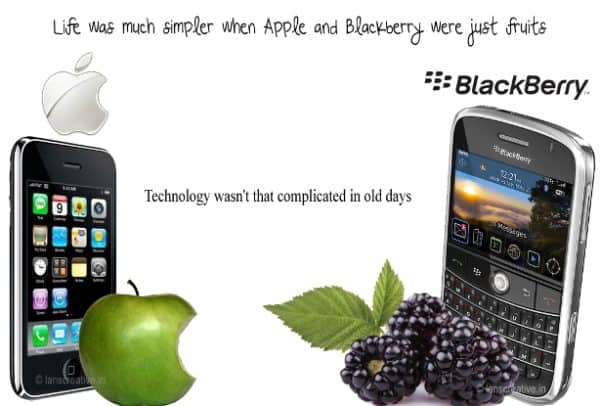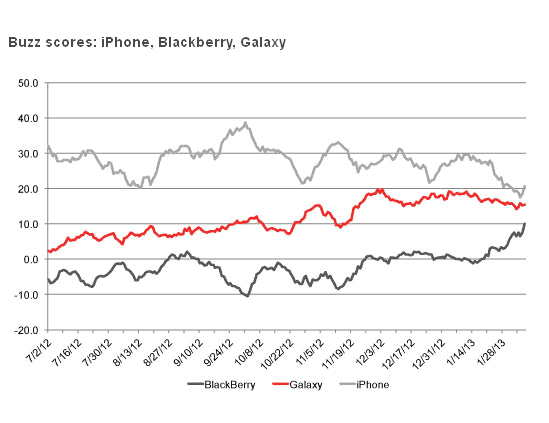
If you had shorted Apple and went long RIM in September a “pair trade”, you are without doubt pleased with the result. But should you continue to ride that trade? And if you didn’t, is it too late to get in on the action? Before the iPhone became synonymous with the smartphone space, Research in Motion and Apple were peers, but could not be described as rivals.
In 2006, when the Cupertino-based company’s biggest concern was whether the iPod could fend off the advances of Microsoft’s ill-fated Zune, it posted annual revenue of $19.3 billion.
For years after the release of the iPhone, there were few causes for alarm in Waterloo. RIM’s revenue for the fiscal year ended February 28, 2009 was $11.07 billion, up 84% from $6.01 billion topline it posted a year prior. Two years later, revenue was near $20-billion.
What happened next, of course, has been more than well documented. RIM management -like many, many, other execs in the space, it should be pointed out – underestimated the impact of the iPhone.
Apple’s stock rose from barely above $50 in 2006 to more than $700 earlier this year. RIM’s of course, went the other way.
____________________
This article is brought to you by Ackroo (TSXV:AKR). Ackroo enables small to medium sized businesses, independent merchants and business networks to increase profitability and build long-term customer relationships through customized loyalty and rewards programs. Click here for more information.
_________________
But lately, and only within the context that Apple has become the most valuable brand in the world and RIM has been relegated to niche player, things have changed. It’s unfair to say that Apple is reeling from a soft launch of the iPhone 5, but there does seem to be a few bruises on the once crisp and shiny Macintosh. Shares of Apple have fallen from its aforementioned high to close 2012 at $532.17, down 32% from their peak. The stock, it should be mentioned, is still up 31.4% from where it closed 2011.
Buoyed by the upcoming release of its new BlackBerry 10 platform, shares of RIM caught fire in the final quarter of this year, ending the year at nearly double its September lows. Still, RIM ended 2012 down 22%.
If you had shorted Apple and went long RIM in September –a “pair trade”, you are without doubt pleased with the result. But should you continue to ride that trade? And if you didn’t, is it too late to get in on the action?
The stories of RIM and Apple in late 2012, explains Cormark analyst Richard Tse, who upgraded RIM to a BUY in late September, but has since downgraded it to market perform, is all about the power of the product cycle. Do you think BlackBerry 10 will be a hit? Then there is compelling evidence that RIM is not inherently risky at these prices.
But what about if you think RIM is headed for a giant flop? Wait a second, says the Cormark analyst. Tse warns the power of the product cycle may supersede even that result, at least in the short term. Tse says product cycles can drive equities even when the immediate financials are absent, provided there is strength in the products. He points to Palm; while its mobile operating systems WebOS ultimately failed, the product cycle lifted the stock from about $4 to more than $18.
Selling smartphones has become an almost comically competitive business, but RIM will benefit from the product cycle in that it will not go head to head with a brand new Apple phone in the new year. There’s also evidence that carriers will back the RIM devices because their relationship with Apple has grown increasingly contentious. The highway isn’t clear, but it is as uncluttered as could be expected.
So when will the power of the product cycle return to Apple’s favour? Most evidence points to the second half of 2013. Analysts expect Apple’s year will look like this: it will release a new radio service to compete with Pandora in March, and perhaps update Apple TV. Nothing major there. In June, the company is expected to preview a new operating system; getting warmer. Then, by Christmas of next year, the big one. That’s when many expect Apple will release the much anticipated Apple Television, the culmination of Steve Jobs swan song effort to simplify the most common piece of technology in your home.
Bottom line: the power of the product cycle should put the wind at RIM’s back for at least another quarter. After that, the company’s fortunes will depend upon whether or not BlackBerry 10 resonates with consumers. If BB10 is a hit, it’s likely a pair trade of these two names will no longer be a valid strategy, because we will find out at approximately the same time the power of the product cycle turns back to Apple’s favour.
______________
________________
Comment
Leave a Reply
You must be logged in to post a comment.






 Share
Share Tweet
Tweet Share
Share




What if RIM returns to a normal product cycle also? I.e. introduces a new product for Christmas 2013? Assuming the initial BB10 devices are successful, the next generation would then compete head-to-head with Apple’s new release. That would be an interesting test of both platforms.
RIM took a long time to launch the BB10. They were aware of the importance of the Xmas shopping season , yet they choose to wait just a little bit longer. I believe their strategy was deliberate and they know what they are doing.The launch will be successful.
Apple is June will release a new operating system for what their iPhones (iOS) or Mac’s be specific! Which one?